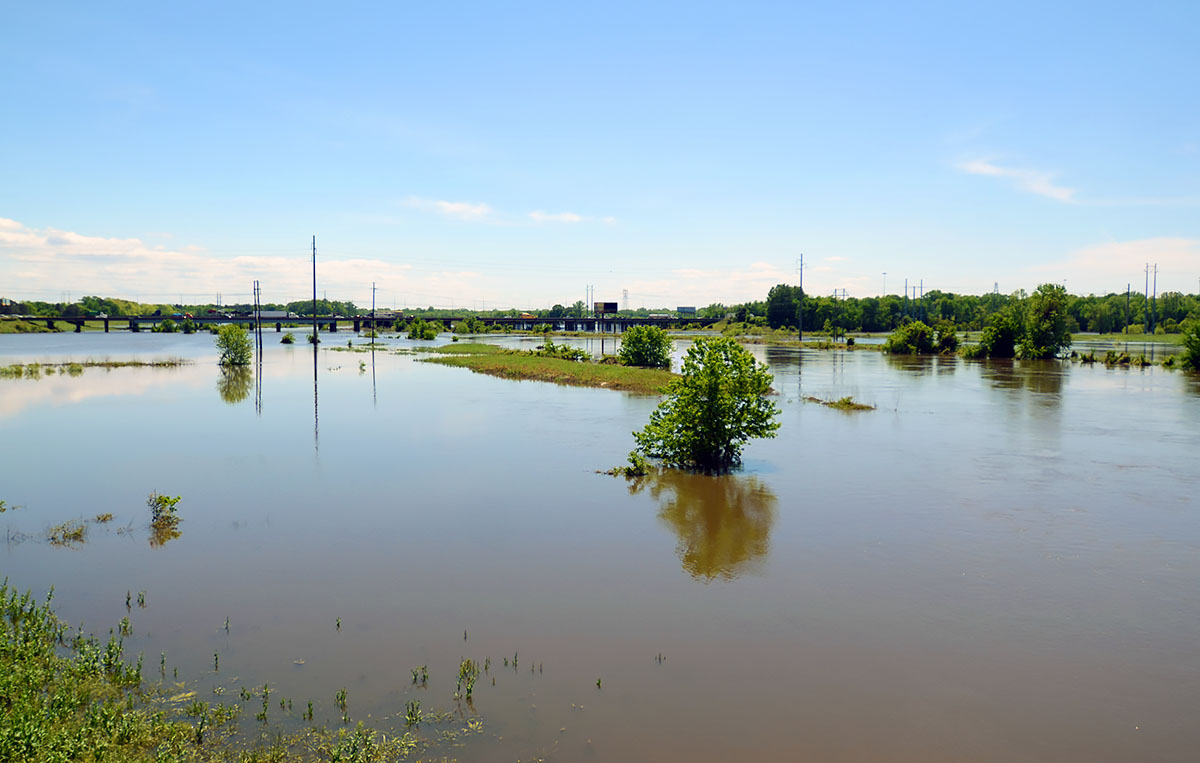While the U.S. Army Corps of Engineers appears to be moving on from the “One Lake” flood control plan, the agency is indicating its support for an altered version of the proposal that includes other flood control components.
Since 2011, local officials at the Rankin-Hinds Pearl River Flood and Drainage Control District — also referred to as the Flood Control District or the Levee Board — have backed One Lake as the solution to a decades-long effort to curb flooding in Jackson. The effort traces back to the record-setting flood of 1979, which the Corps estimates would leave behind over $1.2 billion in damages if it happened today.
The proposal has garnered both support and opposition from politicians on either side of the aisle, with environmental advocates cautioning that One Lake would disrupt the water flow downstream of Jackson and harm valuable ecosystems. Proponents, including local business leaders, have hailed the proposal as a potential revenue-builder for Jackson and Rankin County. The idea behind One Lake was not only to reduce flooding by lowering and spreading the Pearl River out, but also to create recreational areas along the water.
The Corps, the federal agency in charge of approving such a project, visited Jackson last year to hear the public’s input. The group of engineers came back with a draft environmental study on Friday that appears to support a plan with similar features as One Lake with additional mitigation measures, including elevating homes and improving the nearby levee system.

Friday’s report also initiated a new public comment period that lasts until July 22. The Corps will hold a new round of public meetings, including two in Jackson on July 10 and one the following day in Monticello. For more information on how to submit comments or attend the meetings, visit the Corps’ project page.
What options are the Corps looking at?
Friday’s 300-page draft study narrowed the scope of the Pearl River flood control project to four options: a nonstructural option, the locally preferred plan (One Lake), a combination of other plans without a weir, and a combination of other plans with a weir.
The nonstructural option (called “Alternative A1” in the report) would consist of elevating and floodproofing up to 143 structures. Property owners would also have the option of voluntary buyouts, and their land would be converted into publicly owned greenspaces. This option, the report found, had the highest cost-benefit ratio of the four, a key criteria in the Corps’ decision-making. But Alternative A1 also comes with “significant uncertainties and risks,” the Corps wrote, as the plan’s success depends on the participation rate of the property owners.
One Lake (or “Alternative C” in the study) would relocate a dam near the J.H. Fewell water treatment plant, excavate the sides of the Pearl River and widen it for a 10-mile stretch from near Lakeland Drive to south Jackson. Alternative C had the lowest cost-benefit ratio of the four options, the study found. The Corps estimated that the project could cost anywhere from $1 billion to $2.1 billion, and that the annual cost of the project (between $40 million and $80 million) far outweighs the benefits from damage reductions ($14 million). The Corps’ estimate also far exceeds the $340 million cost estimate that local officials attached to One Lake as recently as 2022.
“Alternative C… is not justified under the traditional (Corps) benefit-cost analysis,” Friday’s report said.

The last two options are combinations of other plans. “Alternative D,” the one the Corps is tentatively supporting, includes building a dam on the Pearl River and widening the channel, creating a 1,700-acre lake — a smaller, but similar version of the 2,500-acre lake in Alternative C. Alternative D also doesn’t include moving the existing weir by J.H. Fewell, and the new dam would go in a couple miles upstream of the one proposed in Alternative C.
Another main difference is the other components of Alternative D, which includes elevating or floodproofing up to 60 structures, including 43 homes, as well as voluntary buyouts. The plan would also include improving existing levees, as well as building a new levee on the west side of the river that would reduce flooding for an estimated 250 homes in northeast Jackson.
The other combination plan, “Alternative E,” doesn’t include a new weir, but has less flood-reduction benefits than Alternative D.
“As a result, it can be reasonably expected that one of the (combination) plans, likely (Alternative D), would be the NED plan,” the report says (the “NED,” or National Economic Development, plan indicates which plan best meets the Corps’ criteria as far as weighing the costs and benefits of a proposal).
Alternative D, the report says, would cost between $485 million and $655 million. In 2022, the Corps announced it would spend $221 million in funds from the Infrastructure Investment and Jobs Act on the project.
Environmental advocates who spoke to Mississippi Today said they’re still reviewing the details of the corps’ new proposal, but said that the idea appears to raise similar concerns that came with One Lake.
“It’s going to dig out the wetland areas and the bottomland hardwoods, and it’s going to affect critical habitat, just a little bit less than (One Lake) would have,” said Andrew Whitehurst, Water Program director for Healthy Gulf. “So, it still requires a lot of mitigation.
“Alternative D and old Alternative C are pretty close in what they are going to do to the river.”

